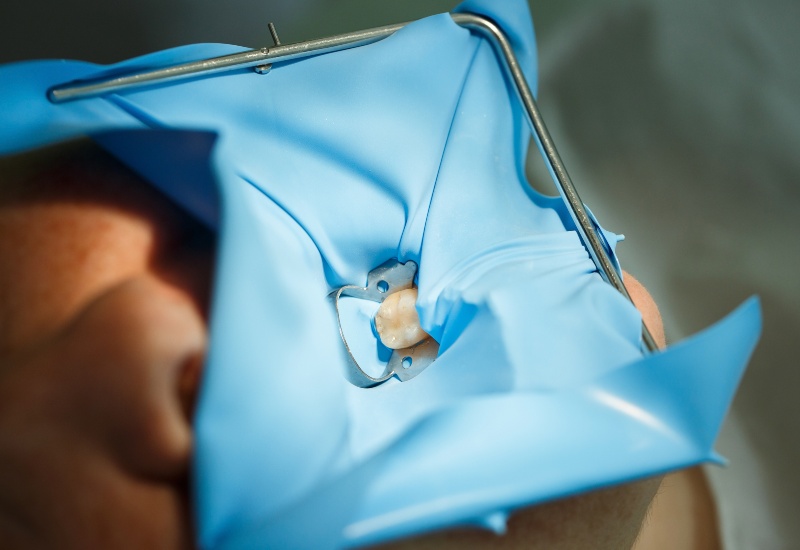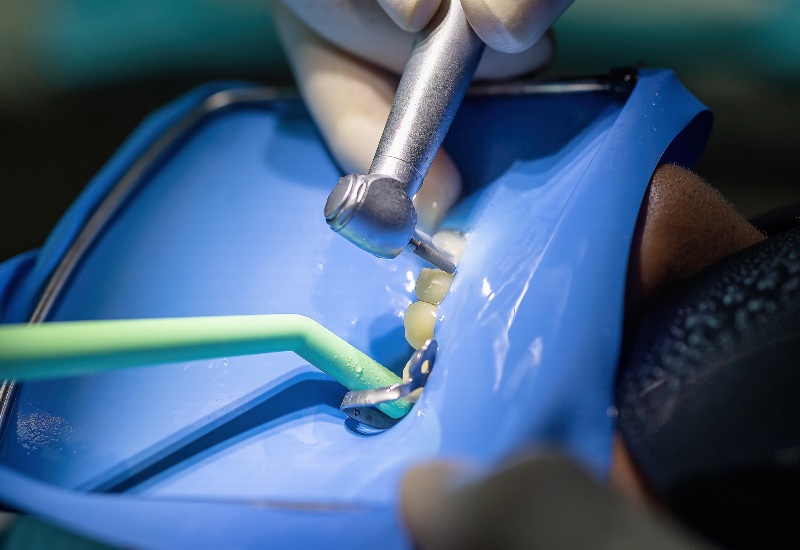What Socket Preservation Means and Why It Matters After Tooth Extraction
Keep Your Jaw Healthy With Socket Preservation
Losing a tooth due to decay, injury, or extraction can be a stressful experience. Beyond the immediate impact on your smile and ability to speak or eat, jawbone deterioration can cause numerous oral health issues. A weakened or shrinking jawbone can make future dental work difficult or impossible. Luckily, there’s a solution. Family Dental Care performs socket preservation procedures for St. Charles & Glen Ellyn, IL patients. Learn more about how this proactive procedure can protect your oral health. Understanding the details of the procedure and its benefits allows you to make an informed decision about your dental care and set the stage for a healthy, stable smile.

What Is Socket Preservation?
The tooth root anchors the tooth to the jawbone. However, when the tooth is extracted, the jawbone is no longer stimulated to grow. Over time, this can lead to jawbone deterioration, resulting in a sunken appearance. Socket preservation is a dental procedure performed immediately after a tooth extraction to minimize bone loss in the empty tooth socket. By filling the empty socket with a bone grafting material, we can encourage new bone growth and prevent the socket walls from collapsing.
Why Is Socket Preservation Necessary?
Bone loss after a tooth extraction happens rapidly. You may notice a change in as little as one month. However, it’s not just a cosmetic issue. It has serious functional consequences, such as causing difficulty chewing and misalignment of surrounding teeth. If you plan on future dental procedures, such as dental implants, socket preservation may be necessary. For an implant to be successful, it requires enough healthy bone to fuse with. If significant bone resorption has occurred, there may not be enough bone to support an implant, requiring a more complex bone grafting procedure in the future. Socket preservation makes future dental work easier and less invasive.
Comprehensive Socket Preservation Procedure
Socket preservation is a straightforward in-office procedure typically completed in one day. It preserves and protects the jawbone by stimulating growth once the tooth root is removed. Learn more about this proactive procedure:
- Extraction – Sock preservation occurs as part of a tooth extraction procedure. The tooth is gently removed to reduce trauma to the surrounding bone and gums.
- Socket Cleaning – After the tooth is removed, the empty socket is thoroughly cleaned to remove potentially infected tissue and create a sterile bone graft environment.
- Bone Graft Placement – The bone graft material is carefully placed into the clean socket to stimulate new jawbone growth. There are numerous types of natural and synthetic sources.
- Membrane Application – Next, a membrane is placed over the graft material to protect it and prevent the gums from growing into the socket.
- Suturing – Finally, the gum tissue is sutured over the membrane to promote healing.
What Are the Benefits of Socket Preservation?
Selecting a socket preservation procedure immediately following your tooth extraction offers numerous benefits.
- Prevent Jawbone Loss – The most significant benefit is the prevention of bone resorption. The socket preservation procedure will help maintain your jawbone’s natural shape and strength.
- Implant Preparation – Once healed, socket preservation creates the ideal foundation for dental implants. If you plan on having dental work in the future, socket preservation will replace the need for expensive bone grafting.
- Maintain Facial Aesthetics – Socket preservation helps maintain the aesthetics of your facial structure by stimulating jawbone growth and preventing the sunken appearance after an extraction.
- Cost-Effective – Socket preservation is a cost-effective alternative to bone graft surgery and is less invasive.

Healing After Socket Preservation
Your dentist will provide detailed post-operative instructions to ensure a smooth recovery. It’s crucial to follow the instructions provided by your dentist once the procedure is complete to prevent any complications. During the initial healing phase, it’s essential to:
- Avoid Disturbing the Surgical Site
- Eat Soft Foods and Chew On the Opposite Side of Your Mouth
- Gently Rinse With Antimicrobial Mouthwash as Prescribed
- Avoid Smoking or Using a Straw, as Suction Can Dislodge the Clot and Graft
Is Socket Preservation Right for You?
If you require a tooth extraction procedure, socket preservation is worth considering, especially if you plan to replace the missing teeth with a dental implant in the future. As a proactive procedure, it helps save you time by being performed as part of your tooth extraction. You won’t need to make an extra trip to the dentist for a more expensive and invasive bone graft. Even if you don’t plan on replacing the missing tooth with an implant, socket preservation allows you to maintain a healthy and fuller-looking jaw by preventing jawbone resorption.
During your consultation, your dentist will perform a thorough examination to assess your oral health. They will discuss your oral healthcare goals to help you decide whether socket preservation is right for you before your tooth extraction.
Trust Us for Socket Preservation Procedures
Maintaining the shape and health of your jawbone after a tooth extraction is essential for your oral health and preparing for future dental restoration procedures. As a reliable way to prevent jawbone loss, it’s highly recommended for dental patients. By understanding the benefits, you can make an informed decision about your dental care and set the stage for a healthy, stable smile for years. Patients throughout St. Charles & Glen Ellyn, IL can speak with the dentists at Family Dental Care to determine if socket preservation is right for them. Contact our office today to schedule your consultation.
